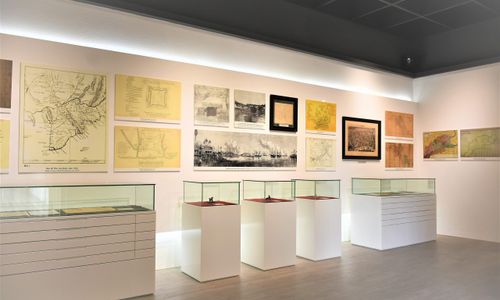Answers For [Trainer] - Willford Living Museum
Answers and detail explain for [Trainer] - Willford Living Museum
EXPLAIN
[Trainer] - Willford Living Museum

GUIDE: Well, good morning, everyone. And a warm welcome to the Wilford Living Museum. Before you look around, I'd like to tell you a bit about the history of Wilford and the purpose of the Museum.
GUIDE: Well, if we go back to the early 1800s, Wilford was very different to what you see today. At that time, the forests had already been cut down, but there were no large urban settlements here, just a few small villages. And this whole area was 1a place where local people kept animals or grew crops. Those were the only economic activities.
GUIDE: But then in 1830, something happened in Wilford that transformed the area. The discovery of 2rich deposits of coal and other minerals opened up many commercial possibilities. Mines were built so these deposits could be brought to the surface. Then a canal was constructed so that canal boats could transport the minerals to other regions. Finally, a railway was built through Wilford in the 1850s, creating many new opportunities.
GUIDE: By the 1870s, Wilford had become an important manufacturing center. A few factories successfully produced fabrics from cotton and wool. However, what Wilford was 3best known for was manufacturing all sorts of tools, machinery and other items out of iron and steel. The attempt to set up a pottery industry here, however, making items for the home out of clay was never really a success.
GUIDE: So for the next hundred years or so, Wilford was a thriving industrial region. However, by the 1970s, the old industries here were in decline. Much of the land at this site wasn't being used, so the local council decided to set up a living museum here. The idea was for visitors to be able to walk around and visit the sorts of factories, shops, homes and schools that were once found here.
GUIDE: When the museum first opened in 1976, 2000 visitors came on the first weekend alone. Since then, visitor numbers have just grown and grown. They now stand at 3000000 4per year, and we anticipate further growth in the years to come. In fact, just recently we welcomed our 9,000,000th visitor, which was an exciting day for us as well as our regular visitors. The museum has a number of other uses. We work closely with universities whose staff consult the range of documents and artifacts we hold here.
GUIDE: As well as that, those 5making movies and television shows often come to the museum because it makes a great set for historical scenes. There's even a possibility that in future, we may open up the Museum for weddings and other private events.
GUIDE: Okay, so if you take out your maps, I'll just point out a few places you might like to visit. So right now we're standing in the ticket office at the bottom of your maps. So one place I recommend is the old bakery. This is a typical bakery from this area from about 100 years ago. To get there from the ticket office, walk up Stafford Street and then turn into Rigby Road. Walk down Ribby Road. There are a few interesting places along the way and the 6old bakery is right next to the canal.
GUIDE: Another interesting place is the Doctor's surgery. This was moved here brick by brick and rebuilt on the museum site. Walk up Stafford Street until you reach the dock. 7You see the cafe. Walk past that and the doctor's surgery is just there.
GUIDE: Cooper's Cottage is also fascinating. A worker's cottage from the 19th century. Walk up Stafford Street and take the first turning on the left. The road curves around to the west, then south. As it climbs Jack's Hill, you'll pass a few little houses on the way up and Cooper's Cottage is 8right on the summit of Jack's Hill.
GUIDE: The stables are also great. This is where they kept all the horses. Again, walk up Stafford Street to the dock and turn right. Walk round the dark till you get to the canal. Then 9cross the bridge over the canal to reach the stables.
GUIDE: Also, be sure to visit the old school. So walk northeast up through the museum and it's not too far. The old school is 10right on the corner of Stafford Street and Rigby Road. Now, one other thing that I need to mention...
Questions 1 - 5:
Choose the correct letter, A, B or C
1In the early 1800s most land in Willford was
A.
B.
C.
2What happened in 1830 in Willford?
A.
B.
C.
3By the 1870s Willford was most famous for making
A.
B.
C.
4What does the guide say about visitors to the museum these days?
A.
B.
C.
5The museum is also sometimes used
A.
B.
C.
Questions 6 - 10:
Label the map below.
Write the correct letter, A-H, next to Questions 6 – 10.
Label the map below. Write the correct letter, A – H, next to Questions 6 – 10
Correct answer: C
Correct answer: F
Correct answer: A
Correct answer: H
Correct answer: E